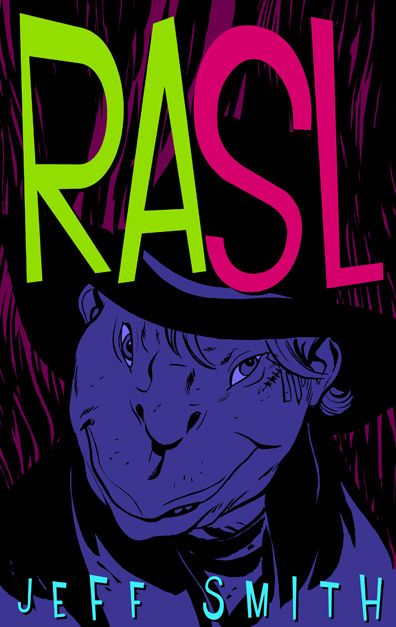I've read Jeff Smith's "Bone" series from start to finish three times. First, in single issues (well, I jumped on at issue #13, so I had to get the first two trades to get caught up -- but I read the single issues the rest of the way), second in the one-volume collected edition (which I bought for my wife, who read it in a single day), and third aloud, to my son (who was three or four at the time). And I just recently used slides of the interior pages of "Bone" #1 as an example of how to introduce characters and setting at a workshop I taught for the Norman Rockwell Museum. So I know how good Jeff Smith can be.
And although "Rasl" uses very few of the same storytelling techniques as "Bone" and features a jarringly different tone, it's a very good comic. "Rasl" takes a more conventional approach to sequential narrative. It's Jeff Smith doing "realism," at least on the surface. Because it's not realism at all, of course. It's his version of a more reality-based setting. Houses that look like houses. Characters who go to strip clubs. Sex. But the entire series is built on a alternate-reality-hopping protagonist and the bizarre creatures who seem bent on tormenting him.
Rasl, the gruff-looking hero with an apish upper lip and disproportionately large cranium, lacks a clear direction in his life. His dimension-hopping escapades in the first issue have landed him a Picasso painting, but for what purpose? Was it the thrill of the chase? Was it just to impress a girl, Annie, who realizes that she can't ever show it to anyone else? Rasl's opening narration expresses the restlessness and despair of someone who's looking for something, but doesn't know what: "We flit in and out of existence like sparks from a fire."
Smith gives Rasl a direction by the end of issue #2, as the story takes a much darker turn and Annie is found dead. A fragment of the Picasso painting has been carved into a heart, drenched in Annie's blood. So the story seems destined to be a revenge drama, then. Rasl will pursue Annie's killer or killers, across parallel universes, thus giving him the purpose he's been longing for. But Smith surely has grander things planned for this series, and although the plot mechanism may have been kick-started by this quest for revenge, I wouldn't be surprised to see deeper mysteries revealed, and larger forces at work here.
"Rasl" is more understated that Smith's previous comic book work, but it's a natural offshoot of his later issues of "Bone." "Bone" began as a rather dialogue-heavy affair, full of jokes and hysteria, but later turned into a much more quiet, stoic series about accepting one's fate. "Rasl" continues that theme, or so it seems, and provides a more nuanced view of the human condition. What's left unsaid between Rasl and Annie is as important -- or more important -- then the words they use to fill the spaces between them.
Without a doubt, "Rasl" is worth your time.

